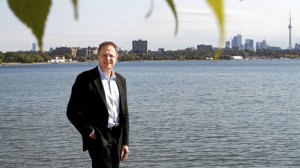By Dylan kristy www.windsorstar.com
WINDSOR, Ont. — An architectural firm that has designed some of the world’s greatest buildings is setting its sights on the Great Lakes.

This week, the greenest and brightest minds from both sides of the border will come together for a weeklong discussion focusing on the many problems facing the Great Lakes. And front and centre will be Chicago-based Skidmore, Owings and Merrill, the firm that built the John Hancock Center and Sears Tower in Chicago and the Burj Khalifa — the tallest building on the planet at 828 metres.
The firm is now focusing its attention on creating a bi-national vision to turn the states and provinces surrounding the Great Lakes into an economic and environmental powerhouse, with the lakes as its nucleus.
The idea is to have these jurisdictions all working together to protect the waterways, promote tourism and develop new economic ventures.
“It’s a very exciting vision but it is also something that is very attainable,” Windsor Mayor Eddie Francis said.
“It’s just a question of making sure that the support, from both the political and business side, is there to make it happen.”
A member of the Great Lakes and St. Lawrence Cities Initiatives, Francis said he saw the blueprint a few years ago and is happy to see it finally gain some momentum. It has garnered support from mayors on both sides of the border and Francis said it’s a plan he sees making ripples in the long-run.
The Great Lakes and St. Lawrence River region forms the largest group of freshwater lakes in the world and contains about 84 per cent of North America’s fresh water.
More than 10 per cent of the U.S. population and 30 per cent of the Canadian population live in the basin and it’s estimated that less than one per cent of the water is renewable.
Francis said while the plan focuses on a wide arrange of topics.
“What it’s going to take is the first step in anything — awareness and knowledge,” Francis said.
“The second thing will be political will.”
On Skidmore, Owings and Merrill’s website, it states that the basin has an impact on everyone and they must work to create global dialogue between “scientists, scholars, urban designers, advocates, writers, politicians, students and residents.”
“This vision is certainly going to help set out a road map as far as what it is we’re trying to achieve,” Francis said.
“It’s a long-term vision so it will take a conservative effort but we’ll get there, we will.”
Government representatives from the U.S. and Canada, along with a coalition of private and public groups will converge on Detroit Tuesday.
“Great Lakes Week is the largest gathering of government and private organizations to help target some of the issues that are affecting the Great Lakes,” said Peter Cassell, spokesman with the U.S. Environmental Protection Agency.
“They will look at success stories of the Great Lakes, restoration initiatives and try and figure out the best track forward for the next few years for lake restoration.” More info















